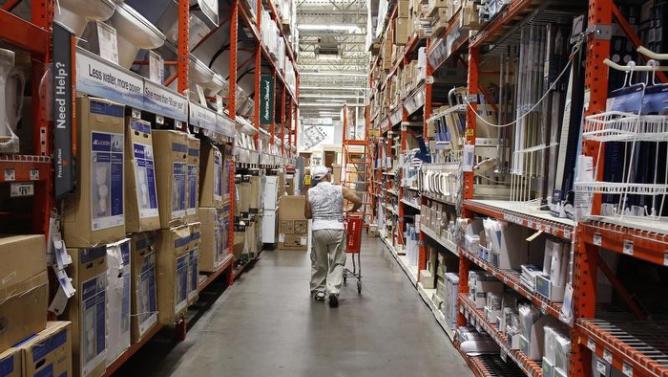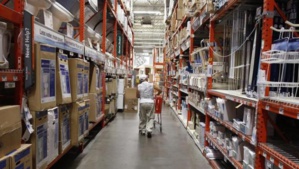The U.S economy has expanded more than its earlier estimate thanks to stronger consumer spending and construction activity. This data will back the case for the U.S Federal Reserve for an early hike in interest rate before the end of this year, despite its note of caution earlier in September.
The U.S. Department of Commerce has informed that the GDP increase at an annual pace of 3.9%, which is up from its April-June quarter pace of 3.7%. This is despite the general slackening of the global economy.
This data is yet another component which will support the argument for an increase in the benchmark interest rates, which have not been revised for nearly a decade.
However, many economists are expecting a slower pace of growth in the third quarter, a view that has been bolstered by separate data which shows slower growth in services as well as a drop in consumer sentiment in September.
Although the Federal Reserve postponed its decision to hike interest rates, Janet Yellen, the Fed Chair, has kept the doors open for a hike in interest rates in her speech on Thursday night. As long as inflationary trends remain stable and growth is strong enough to boost employment, a change in this decision is unlikely.
"There are a lot of things to like about the domestic side of the economy for the second half of the year despite all the global malaise. If the domestic economy holds in there, (Fed policymakers) are going to hike in December," said Jacob Oubina, senior economist at RBC Capital Markets in New York.
Second quarter growth has beaten expectations, which was measured in a poll by Reuters. Further the growth in the second quarter was bolstered by higher consumer spending on sectors such as transportation and healthcare.
Treasury debt prices extended losses and the dollar continued to strengthen, hitting a fresh five-week high against a basket other currencies after the second-quarter results went public.
The preliminary Purchasing Managers Index for the services sector from Markit dipped marginally from its previous reading of 56.1 in August to 55.6 in September. A reading of over 50 signals expansion in economic activity.
"The survey data point to sustained steady expansion of the U.S. economy at the end of the third quarter, but various warning lights are now flashing brighter, meaning growth may continue to weaken in coming months," said Chris Williamson, chief economist at Markit.
Consumer spending, which accounts for more than two thirds of U.S. economic activity, had a strong helping hand in the form of cheap gasoline prices and relatively higher prices in the housing market which boosted household wealth.
"For the Fed, the forward-looking part is most important and the one positive take-away is inventory contribution," said Gennadiy Goldberg, interest rates strategist at TD Securities.
"There had been quite a bit of fear that strong inventory building in Q2 would be unwound in Q3. It actually shows GDP should be a little firmer in the next quarter, but not by a whole lot," added Goldberg.
The U.S. Department of Commerce has informed that the GDP increase at an annual pace of 3.9%, which is up from its April-June quarter pace of 3.7%. This is despite the general slackening of the global economy.
This data is yet another component which will support the argument for an increase in the benchmark interest rates, which have not been revised for nearly a decade.
However, many economists are expecting a slower pace of growth in the third quarter, a view that has been bolstered by separate data which shows slower growth in services as well as a drop in consumer sentiment in September.
Although the Federal Reserve postponed its decision to hike interest rates, Janet Yellen, the Fed Chair, has kept the doors open for a hike in interest rates in her speech on Thursday night. As long as inflationary trends remain stable and growth is strong enough to boost employment, a change in this decision is unlikely.
"There are a lot of things to like about the domestic side of the economy for the second half of the year despite all the global malaise. If the domestic economy holds in there, (Fed policymakers) are going to hike in December," said Jacob Oubina, senior economist at RBC Capital Markets in New York.
Second quarter growth has beaten expectations, which was measured in a poll by Reuters. Further the growth in the second quarter was bolstered by higher consumer spending on sectors such as transportation and healthcare.
Treasury debt prices extended losses and the dollar continued to strengthen, hitting a fresh five-week high against a basket other currencies after the second-quarter results went public.
The preliminary Purchasing Managers Index for the services sector from Markit dipped marginally from its previous reading of 56.1 in August to 55.6 in September. A reading of over 50 signals expansion in economic activity.
"The survey data point to sustained steady expansion of the U.S. economy at the end of the third quarter, but various warning lights are now flashing brighter, meaning growth may continue to weaken in coming months," said Chris Williamson, chief economist at Markit.
Consumer spending, which accounts for more than two thirds of U.S. economic activity, had a strong helping hand in the form of cheap gasoline prices and relatively higher prices in the housing market which boosted household wealth.
"For the Fed, the forward-looking part is most important and the one positive take-away is inventory contribution," said Gennadiy Goldberg, interest rates strategist at TD Securities.
"There had been quite a bit of fear that strong inventory building in Q2 would be unwound in Q3. It actually shows GDP should be a little firmer in the next quarter, but not by a whole lot," added Goldberg.






